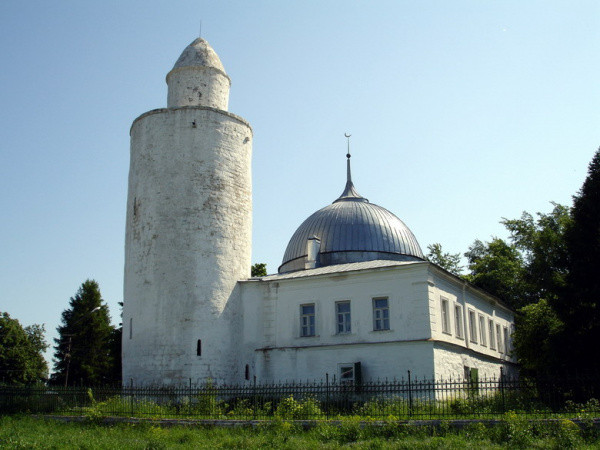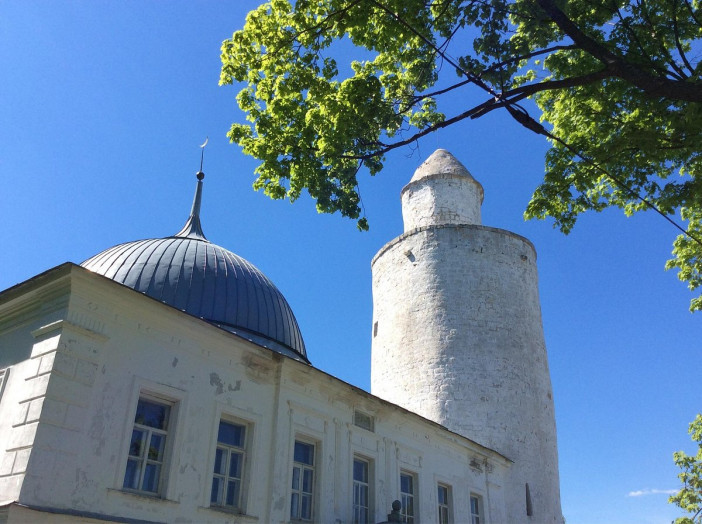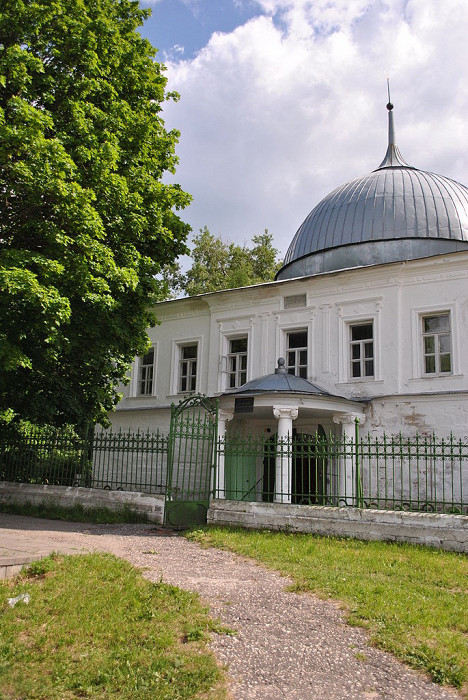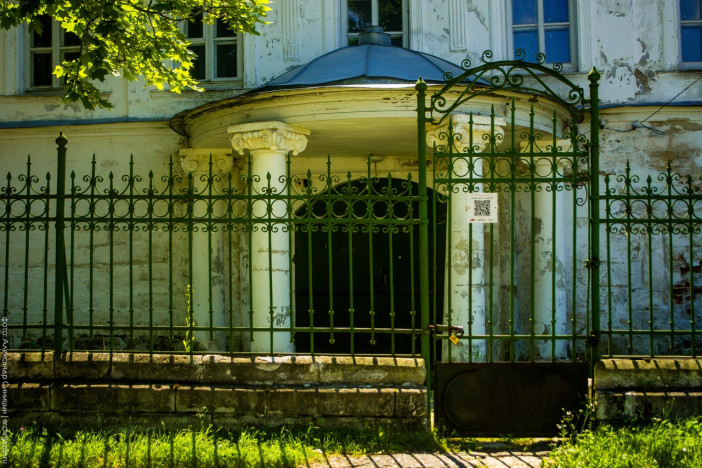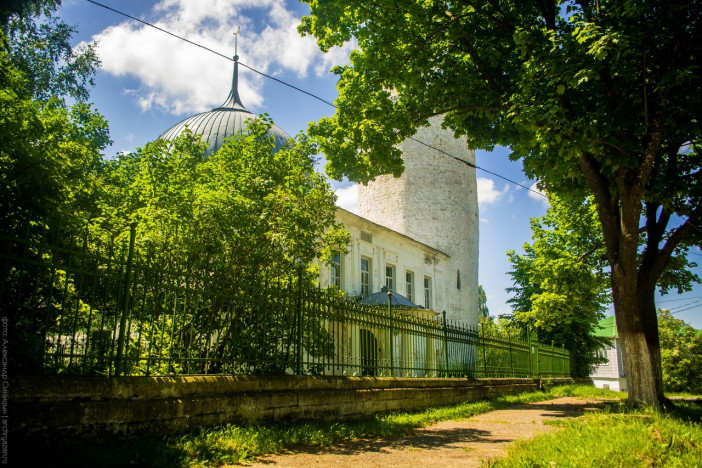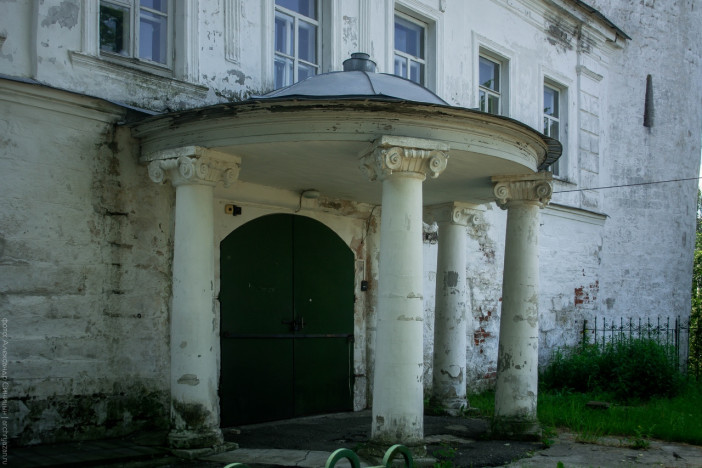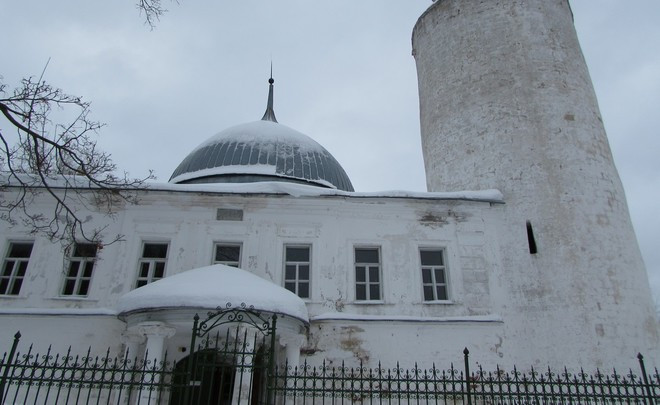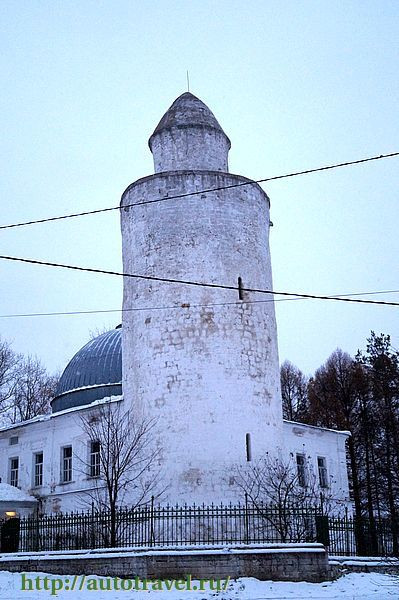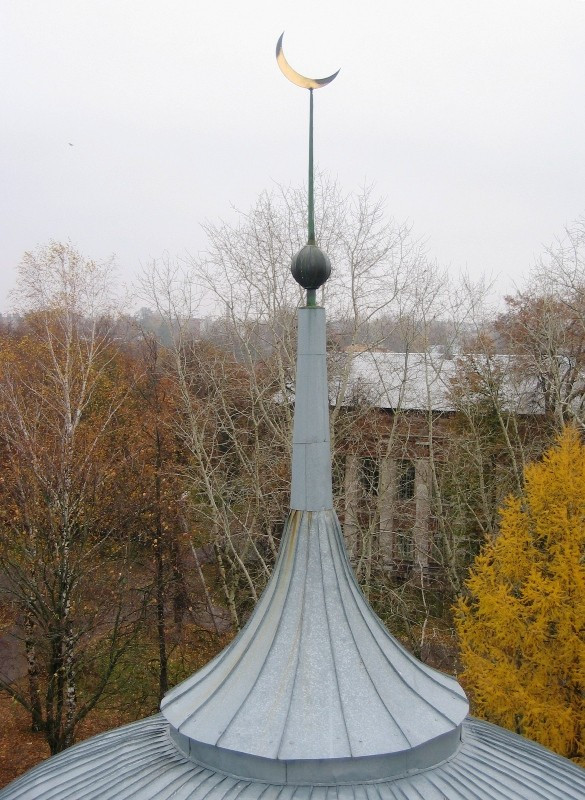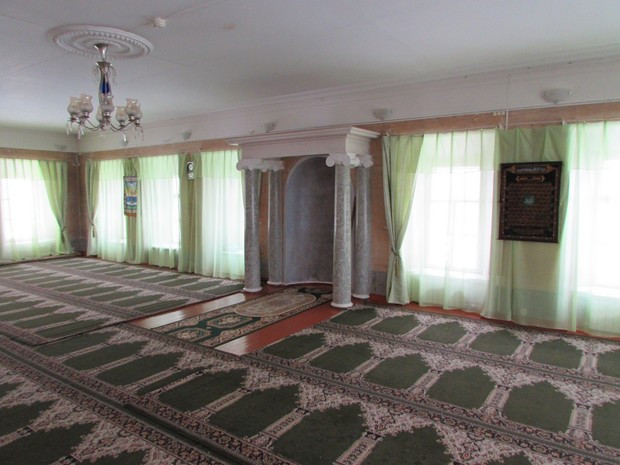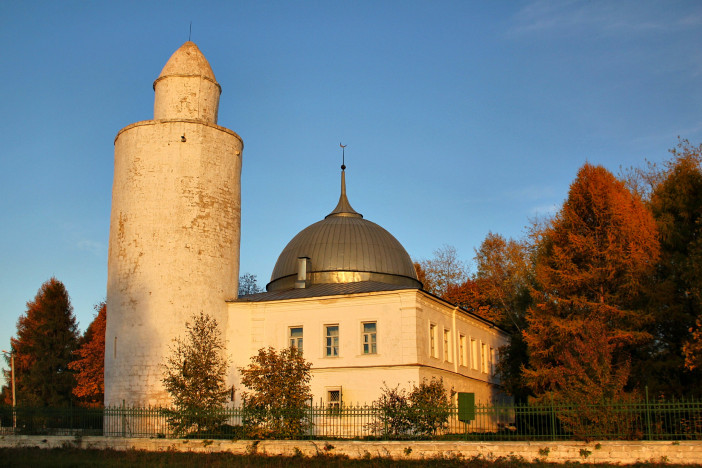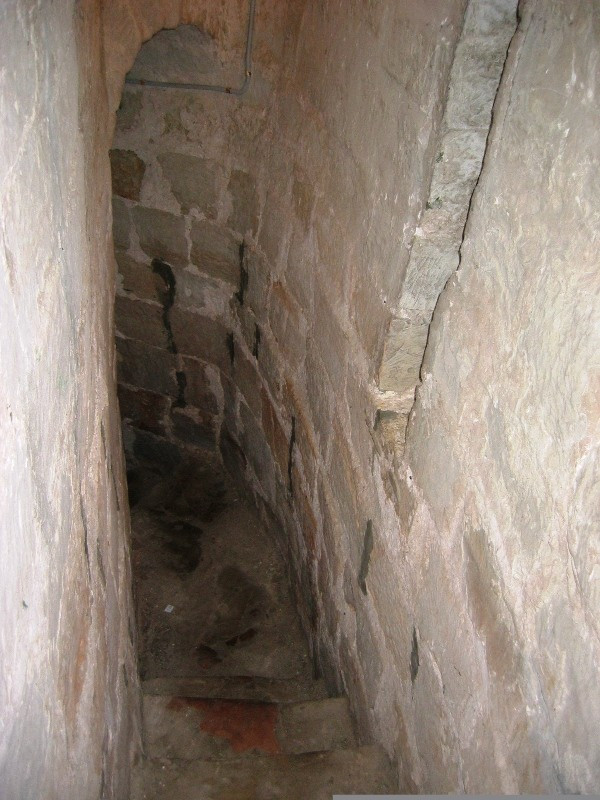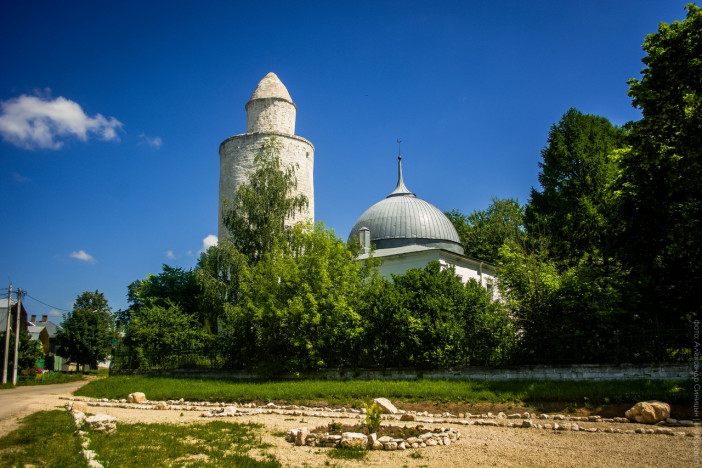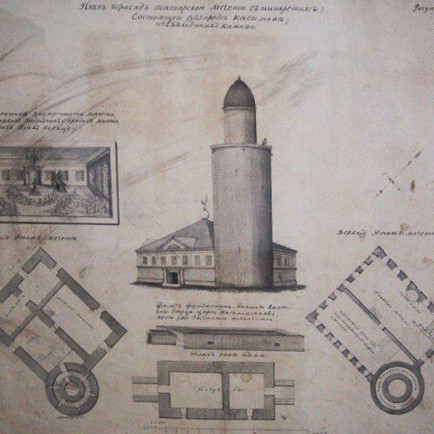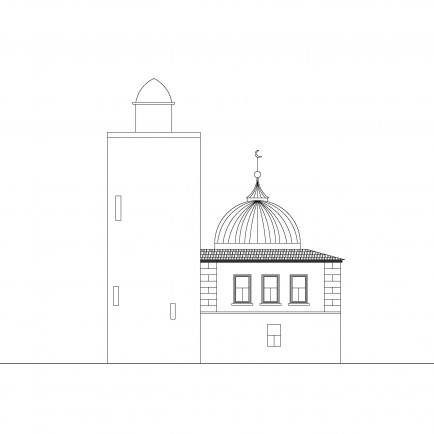Khan’s Mosque
History
At the highest point of Kasimov, there rises a snow-white minaret and an ancient mosque. They have been standing here since the days of the Kasimov Khanate.
Some researchers believe are convinced that the first mosque in Kasimov was erected as early as the XV century by Tsarevich Yakub and Kasim. The others believe that the Muslim temple was built much later – during the reign of Khan Shakh Ali. It is noteworthy that in the middle of the XVI century it was the only stone mosque in the territory of Rus’.
According to legend, in 1702, Russian Tsar Peter the Great arrived in Kasimov down the Oka River. When he saw a high building on a hillside, he thought it was an Orthodox church and crossed himself. When the Tsar discovered that there was a mosque in front of him, he ordered it to be demolished. The minaret was left untouched. For a long time, it served as a watchtower.
Empress Catherine II issued a special decree, thanks to which a new mosque was erected next to the old minaret. The construction was supervised by a sotnik (a military rank) of the Tatar Sloboda, and in 1768 a new mosque was built for the Kasimov Tatars. Right until 1835, it was a one-storey building, but later another storey was constructed.
Shortly after the revolution, the Muslim temple was closed for worshippers, and since 1938 the local history museum of Kasimov was located inside the building. In the 2000s the museum’s main exposition was moved to the Alyanchikov house on Sobornaya Square, and materials concerning the history of the Kasimov Tatars were kept in Muslim buildings.
In 2013, the mosque was returned to the worshippers. Today, the complex includes a two-storey building of the mosque itself, a tall minaret and the mausoleum of Khan Shakh Ali. On the wall of the mosque, above the door, there is a text written in the old Tatar language. It lists the names of distinguished Tatars of the city, who took part in the construction of the mosque in the second half of the XVIII century.
Urban and Architectural
A two-story building with a dome in the style of classicism with a two-tiered minaret in the form of a low cylinder under a pointed dome placed on a massive base.
Description
References
https://russia-islworld.ru/kultura//the-six-oldest-russian-mosques-2021-03-23-15452/
http://dumro.ru/catalogue/?id=10&article=1000793
https://ru.wikipedia.org/wiki/%D0%A5%D0%B0%D0%BD%D1%81%D0%BA%D0%B0%D1%8F_%D0%BC%D0%B5%D1%87%D0%B5%D1%82%D1%8C_%D0%B2_%D0%9A%D0%B0%D1%81%D0%B8%D0%BC%D0%BE%D0%B2%D0%B5
https://tonkosti.ru/%D0%A5%D0%B0%D0%BD%D1%81%D0%BA%D0%B0%D1%8F_%D0%BC%D0%B5%D1%87%D0%B5%D1%82%D1%8C_%D0%B2_%D0%9A%D0%B0%D1%81%D0%B8%D0%BC%D0%BE%D0%B2%D0%B5
Details
Location
391300, Ploshchad' Pobedy, 9, Kasimov, Ryazan Oblast, russia، 391302
Year of Build
1768
Drawings
Map
History
At the highest point of Kasimov, there rises a snow-white minaret and an ancient mosque. They have been standing here since the days of the Kasimov Khanate.
Some researchers believe are convinced that the first mosque in Kasimov was erected as early as the XV century by Tsarevich Yakub and Kasim. The others believe that the Muslim temple was built much later – during the reign of Khan Shakh Ali. It is noteworthy that in the middle of the XVI century it was the only stone mosque in the territory of Rus’.
According to legend, in 1702, Russian Tsar Peter the Great arrived in Kasimov down the Oka River. When he saw a high building on a hillside, he thought it was an Orthodox church and crossed himself. When the Tsar discovered that there was a mosque in front of him, he ordered it to be demolished. The minaret was left untouched. For a long time, it served as a watchtower.
Empress Catherine II issued a special decree, thanks to which a new mosque was erected next to the old minaret. The construction was supervised by a sotnik (a military rank) of the Tatar Sloboda, and in 1768 a new mosque was built for the Kasimov Tatars. Right until 1835, it was a one-storey building, but later another storey was constructed.
Shortly after the revolution, the Muslim temple was closed for worshippers, and since 1938 the local history museum of Kasimov was located inside the building. In the 2000s the museum’s main exposition was moved to the Alyanchikov house on Sobornaya Square, and materials concerning the history of the Kasimov Tatars were kept in Muslim buildings.
In 2013, the mosque was returned to the worshippers. Today, the complex includes a two-storey building of the mosque itself, a tall minaret and the mausoleum of Khan Shakh Ali. On the wall of the mosque, above the door, there is a text written in the old Tatar language. It lists the names of distinguished Tatars of the city, who took part in the construction of the mosque in the second half of the XVIII century.
Urban and Architectural
A two-story building with a dome in the style of classicism with a two-tiered minaret in the form of a low cylinder under a pointed dome placed on a massive base.
Description


